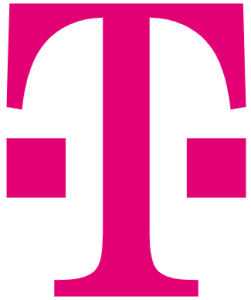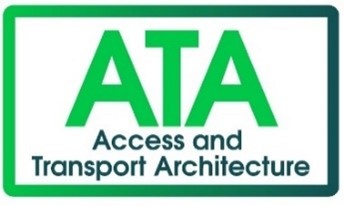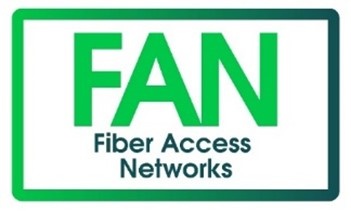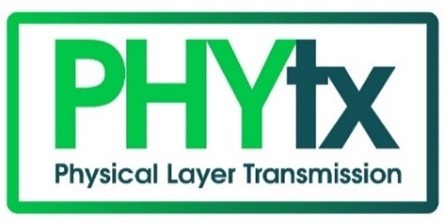 Image Removed
Image Removed
A
Word welcome from our
CEO As we bid farewell to Summer, our Q3 meeting has seen us venture into now familiar territory with a virtual backdrop for the second successive meeting. Despite the lack of face-to-face interaction, our meetings are as productive and fruitful as ever. The ease at which the meetings are being conducted over video further highlights the role that fixed broadband has played in keeping us connected throughout the recent uncertain months.
This meeting saw a great attendance with 292 attendees, 28 potential new member guests and 58 first-time attendees. This highlights the continuing efforts across the industry to come together to shape the future broadband ecosystem despite the challenges of 2020. Maybe like a lot of things with the pandemic, we are having the experience of doing things a little differently – necessity really can be the mother of invention. As the broadband industry continues to evolve, so too must we. This quarter, we bid farewell and thank you to Broadband Forum President Tom Starr who has been an important member of our family for more than a quarter of a Century. This transition has seen us welcome two new additions to the Board (Ding Hai of China Unicom and Mike Talbert of Verizon – welcome to them both!) and Bernd Hesse has been named as the new President.
This meeting also saw the launch of a new project. The open source User Datagram Protocol (UDP) Speed Test will be a game-changer for broadband measurements and gigabit broadband, quantifying and verifying ‘ultra-fast’ broadband.
Other developments saw the Broadband User Services Work Area continue to collaborate with the prpl Foundation to use User Services Platform (USP) to create interoperable smart gateways, while the OB-MAP project is working with prplMesh to redefine the definition of prplMesh APIs. The Open Broadband – Broadband Access Abstraction (OB-BAA) team finalized its fourth major release of its reference implementation of the CloudCO's BAA layer and the OB-USP-Agent Work Area’s Canary Release is almost complete. The Physical Layer Transmission Work Area published its technical report Reverse Power Feed (RPF) Test Plan (TR-338), the release of new and improved Common YANG models is imminent and the Wireless-Wireline Convergence Work Area delivered its initial 5G specifications.
This momentum will continue as we enter the last quarter of the year and continue to deliver on the promise of broadband by enabling smarter and faster broadband networks. We also continue to inform and inspire the industry with our vBASe sessions and will host our first-ever virtual UFBB and virtual demo at Broadband World Forum.
Farewell Tom and all the best!
 Image RemovedAfter 26 years as Broadband Forum President, Tom Starr, of AT&T, has retired from the Board of Directors. He is succeeded by Bernd Hesse, of Calix. Thank you for your many years of service Tom!
Image RemovedAfter 26 years as Broadband Forum President, Tom Starr, of AT&T, has retired from the Board of Directors. He is succeeded by Bernd Hesse, of Calix. Thank you for your many years of service Tom!
Broadband Forum has further strengthened its board of directors, welcoming two new operators – Verizon and China Unicom – as its work to develop and standardize next-generation broadband continues. Mike Talbert, of Verizon, and Ding Hai, of China Unicom, are the latest members to join the board which includes representatives from BT, CommScope, Deutsche Telekom, Ericsson, Huawei Technologies, InCoax, MaxLinear, Nokia, and Telecom Italia.
| Panel |
|---|
Previous Newsletters |
Become a Broadband Forum WA Director!
Do you want to help shape the future of broadband? If so, why not become a Broadband Forum Work Area Director?
Broadband Forum is seeking the appointment of leaders for the following Work Areas:
- Access and Transport Architecture
- Broadband User Services
- Fiber Access Networks
The terms will last for two years, beginning from January 2021. To submit a candidacy statement, follow the instructions provided on Broadband Forum Members’ Wiki. The closing date for submissions is 28th September 2020 at 5pm Pacific Time.
For more information about what a Work Area Director’s role will entail, please visit: BBF Work Area Directors.
Sponsorship opportunities are available for the Forum's upcoming quarterly meetings. Sponsoring a meeting is a great way to highlight your company and exhibit your company's innovation in the broadband industry – including demonstrations or prototypes – while showing your support of the Broadband Forum. Opportunities vary and can be customized to accommodate a variety of budgets.
View our standard sponsorship packages and benefits: Sponsorship Opportunities
Contact Rhonda Heier at rheier@broadband-forum.org for more information.
Broadband Forum motivates 5G transport network architecture and requirements
5G requires a highly scalable and future oriented network architecture – including intelligent, coordinated, automation of the RAN, mobile core, and transport networks – to enable deployment and operation of new revenue generating services. This will be realized by the transport architecture being developed which will provide the necessary standard interfaces, requirements, and modeling to realize this automation.
This is the message set out in a new whitepaper published by Broadband Forum. The document outlines the new transport architecture the Forum is developing and sets out the motivation and benefits for operators to upgrade their transport networks and ensure their legacy backhaul infrastructure meets a new suite of demands to ensure superior RAN performance and maintain low total cost of ownership for 5G.
The whitepaper – titled “5G Network Architecture Overview” – explains that the new complexities of 5G networks require intelligent, automated coordination between RAN, mobile core networks and the underlying transport network to meet the demands of 5G. Legacy transport systems need to be upgraded and backhaul systems must meet a suite of new demands to ensure superior RAN performance and maintain low total cost of ownership. 5G backhaul systems need to address increased capacity and greater interface density requirements. For example, 5G backhaul baseband interfaces will need 10 Gbps capacity and need to scale efficiently up to 100Gbps.
“5G is driving mobile operators to take a holistic approach to transport network planning,” said Robin Mersh, CEO of Broadband Forum. “The technology also brings a significant increase in capacity, requires an estimated doubling of radio sites deployed, and the need for a new architecture with new RAN and Core interfaces. These new architectures and new interfaces each have specific requirements that must be met not only by the mobile equipment, but by the underlying transport network.”
Continuing to inspire the industry with vBASe  Image Removed
Image Removed
Broadband Forum has confirmed the dates of its next vBASe sessions. It will host its first ever virtual demo at Broadband World Forum, from October 13-15, showcasing the latest developments of its OB-BAA initiative. A panelist session on the Connected Home, along with a live Q&A, will also be held.
vBASe North America will then take place on October 26, with a theme of “2020 Lessons, 2021 Reality”, while vBASe Australia will see Broadband Forum team up with nbn to provide three weekly 90 minute sessions to deliver a market update. The vBASe series continues for the first-ever virtual UFBB 2020 during the weeks commencing November 16 and 23. vBASe UFBB will cover the theme of ‘The Technology Leaders’ and will see three virtual sessions on Market Update, Access technology and Connected Home technology.
The PON reality check 2020 series of webinars are continuing to keep the industry updated on the latest innovations influencing fiber today. Taking place on Thursday, September 10 at 7.30am PST, the ‘State of PON in the MSO Market’ webinar will feature presentations from Liberty Global, Telecom Argentina, CommScope, and Calix. Save your seat at: https://zoom.us/webinar/register/WN_M4Dc7iAYR8GRsR6b6IbkEw.
_______________________________________________________________________
Work Area Updates
For a full list of all Technical Reports approved by Broadband Forum, click here. Please feel free to share this information with your colleagues, so they are engaged and aware of the developments of this work. For additional insight and to get involved, sign up for the members-only Broadband Forum tools and access your member-only account using your company email address.
ATA’s PEAT Project Stream is Smokin'!
 Image RemovedTarget: The Access and Transport Architecture (ATA) Work Area maintains primary architectural work of Broadband Forum. This work reflects the control, management and data plane aspects of Broadband Forum’s defined and new architectures. These architectures are augmented to leverage new industry practices, while protecting the investment in broadband networks already deployed.
Image RemovedTarget: The Access and Transport Architecture (ATA) Work Area maintains primary architectural work of Broadband Forum. This work reflects the control, management and data plane aspects of Broadband Forum’s defined and new architectures. These architectures are augmented to leverage new industry practices, while protecting the investment in broadband networks already deployed.- Progress/Outcomes: The Performance, Experience, Application Testing (PEAT) Project Stream led the Work Area activity this meeting, wrapping up three documents and starting two more for a total of nine documents currently in the development process. They are:
- TR-471Maximum IP-Layer Capacity Metric, Related Metrics, and Measurements - was released in July (CONTRIB-21735)
- WT-390.2 Performance Measurement from IP Edge to Customer Equipment using STAMP - currently in Final Ballot (CONTRIB-21206)
- WT-452.1 Quality Attenuation Architecture and Requirements - currently in Final Ballot (CONTRIB-22003)
- WT-452.2 Quality Attenuation Measurements using Active Test Protocols - In progress (CONTRIB-22309)
- WT-452.3 QED Quality Attenuation Conformance Testing - In progress (CONTRIB-22147)
- MD-452.2 Use of DeltaQ to Manage Customer SLA (QED) - In progress (CONTRIB-22309)
- MD-452.3 QED: Performance Measurement Architecture (webinar/presentation) - was started during this meeting (CONTRIB-22457)
- MD-452.4 QED Uses in Lab Evaluation & Network Design - was started during this meeting (CONTRIB-22449)
- MD-471.2 Maximum IP-Layer Capacity Metric and Measurement with Open Source Implementation was sent to Straw ballot during this meeting. Straw Ballot resolution is targeted for 8 Oct 2020 (CONTRIB-22460)
Of particular interest is the start of the Open Broadband project on UDP Speed Test (OB-UDPST) which is developing an open source implementation of a tool to perform the metrics defined in TR-471 noted above.
The Mobile Transport and Routing Project Stream continued to progress its projects on:
- WT-521 5G Transport Networks (architecture and requirements) - In progress (CONTRIB-20551). A last list of contribution topics was compiled for work over the coming months.
- MD-521.2 5G "What's fixed got to do with it?" Transport Tutorial - In progress (CONTRIB-21956)
- WT-522 Mobile-Transport Network Slice Instance Management Interfaces (MMI) - In progress (CONTRIB-21582)
Disaggregated Broadband Network Gateway (DBNG) and Carrier Grade (CG) Network Address Translation (NAT) projects:
In addition to contribution towards the Disaggregated BNG "wish list" of features and functions of interest to the community, and the winding down of the CGN for DBNG study, a new working text was started during this meeting:
- WT-459.2 Integrated Carrier Grade NAT with DBNG (CONTRIB-22414)
Also of interest to the ATA community during this meeting were the following work items in other Work Areas:
The synopsis above is all ATA work currently in progress or finished since the 2020 Q2 meeting.
For more information on ATA Work Area’s ongoing work, visit: https://wiki.broadband-forum.org/display/BBF/Access+and+Transport+Architecture.
BUS continues to progress a host of work streams
 Image Removed
Image Removed
The Broadband User Services (BUS) Work Area has been working closely with experts on 5G Wireline/Wireless convergence to soon release a clear set of requirements for 5G enabled residential gateways in its next issue of TR-124. In addition, Service Providers will be able to onboard, manage, monitor, and control 5G residential gateways using TR-069 and its evolution (USP/TR-369) using new elements defined in the Device:2 (TR-181) data model. Look for both of these documents by the end of the year.
The USP is constantly growing in popularity, being built on solid technology and flexible architecture. The BUS group is working with the prpl Foundation to explore how using USP can create very real, interoperable smart gateways that can provide application developers with an easy way to build new services to operate on the gateway. That work is progressing quickly, along with updated versions of USP, the OB-USP-Agent open-source reference solution, and the BBF.369 USP Agent certification program.
Publication of new and improved Common YANG models is imminent!
- Target: Specify YANG modules that are applicable to multiple Work Areas, NETCONF/YANG test plans and certification for the defined YANG modules, and maintain YANG Best Current Practices, processes, procedures and tools.
- Progress: Final Ballot ongoing for the Common YANG Modules (WT-383a3) and YANG Modules for Fiber-to-the-distribution-point (FTTdp) Management (WT-355a3). Accepted further improvements to WT-383 related to Quality of Service (QoS) and Access Node Control Protocol (ANCP). Accepted further improvements to WT-355 related to VDSL performance counters. Continued progress defining the Software Management YANG model.
 Image Removed
Image Removed
Discussed a strategy to define a flexible device aggregation YANG model that can be used in a variety of use cases including the Persistent Management Agent Aggregator (PMAA) as defined in WT-393. There was a joint review with the SDN/NFV Work Area on YANG for NETCONF requirements for Access Nodes and Broadband Access Abstraction (WT-435), a common Remote Endpoint module and common modules for types and network map.
- Outcomes: Work will continue on Amendment 4 of WT-383 and WT-355, along with discussion on how to take in YANG modeling work related to common functions from the SDN/NFV Work Area.
The virtual Common YANG meetings allowed YANG experts to get together and continue to progress the definition of new YANG models that are to be used for efficiently managing ultrafast broadband over VDSL, FAST and Passive Optical Networks (PON).
With Final Ballot ongoing for Amendment 3 of the Common YANG Modules (WT-383a3) and YANG Modules for Fiber-to-the-distribution-point (FTTdp) Management (WT-355a3), the group has kicked off work on Amendment 4 of both documents.
At the core of this week’s virtual meeting lies the progress on the Software Management YANG model, which is relevant to several Work Areas and is applicable to several network elements including Fiber OLTs, Copper DPUs and CPEs.
Next to this, the group accepted further improvements to WT-383 related to QoS and ANCP, as well as improvements to WT-355 related to VDSL performance counters.
Moving forward, Common YANG is looking to adopt a more agile approach in YANG model delivery and maintenance in order to continually add value to the Forum’s published YANG model portfolio.
For an overview of the Common YANG Work Area’s current activities, please visit: Common YANG
FAN makes significant strides ahead of Q4
Target: TR-280 Issue 1 Corrigendum 1 is progressing and due to be finalized after the Q3 virtual meeting.
 Image Removed
Image RemovedProgress: During the Q3 interim meetings, WT-385 Issue 2 ITU-T xPON YANG and WT-352 Inter-Channel Termination Protocol (WT-352) were being prepared for final ballot. WT-352 passed final ballot and WT-385 was going to final ballot ahead of the Q3 virtual meeting.
Outcome: WT-352 Issue 2 passed final ballot recently and WT-385 Issue 2 has been sent for final ballot.
For more on the FAN Work Area’s ongoing work, please see: Fiber Access Networks
Open Broadband
 Image Removed
Image Removed
OB-BAA nears major release ahead of BBWF 2020 demonstration
The OB-BAA project team is putting the finishing touches to its fourth major release of its reference implementation of the CloudCO's BAA layer. In this release, the OB-BAA team has developed a reference implementation of Broadband Forum’s virtual ONU Management and Control interface (vOMCI) specification (WT-451) as well as the ability for access nodes to intercept and the BAA layer to redirect control and user plane packets that can be used in traffic steering and other SDN applications.
Along with OB-BAA's existing capabilities to manage access nodes, the vOMCI and control relay capabilities enable vendors to provide support for white box implementations for various types of access nodes using either standard adapters or via vendor specific adapters. This new release, with traditional and white box implementations, will be demonstrated in the Broadband Forum pavilion during the virtual Broadband World Forum 2020 in October.
Q3 sees OB-MAP and prplMesh continue collaboration
The Open Broadband – Multi Access Point (OB-MAP) project – together with prplMesh – has been further refining definition of prplMesh APIs, together with the prplMesh team. Discussions have largely centered around the API model and the TR-181 data model that would consume these APIs (either directly or through gMap).
The project continues to ensure that all physical layer technologies are supported in the context of prplMesh APIs and network topology.
In the future, OB-MAP still expects to produce vendor extensions to the IEEE 1905.1, a specification that will provide carrier-grade capabilities enhancing EasyMesh operation in operator deployments. Once these are done, the team will also deliver certification requirements for these Broadband Forum extensions that would lead to a certification program.
The Canary Release nears completion for OB-USP-Agent
Recent Accomplishments: The OB-USP-Agent project team has published the roadmap for the community to better understand the Work Area’s current state and future direction - https://github.com/BroadbandForum/obuspa/wiki/Roadmap.
Current Efforts: The Canary Release (Release 3) is nearing completion, the code has been finalized and the project team is wrapping up the last few defects ahead of the planned release date at the end of September. Release 3 focuses on providing support for MQTT and Architecture improvements to better support OpenWRT/prplWRT and RDK-based deployments.
Future Plans: Publish Release 3 and initiate the planning of Release 4.
- Target: To help service providers deploy equipment that will provide a better Quality of Experience (QoE) for their end-users.
- Progress: The Physical Layer Transmission (PHYtx) group published the next issue of the Reverse Power Feed Testing recommendation (TR-338i2) and resolved the technical comments received during the Technical Review of the 'Fiber access extension over existing copper infrastructure' (WT-419) and the G.fast certification test plan (DTP-337i3). Work on the next revision of WT-419 has been initiated.
- Outcome: DTP-337i3 and TR-419 are ready for Final Ballot.
 Image RemovedThe next issue of the 'Reverse Power Feed (RPF) test plan' (TR-338i2) has been published. The Technical Review (straw ballot) of the 'Fiber Access Extension Over Existing Copper Infrastructure' (WT-419) and the G.fast certification test plan (DTP-337i3) was finalized and the documents are prepared for Final Ballot.
Image RemovedThe next issue of the 'Reverse Power Feed (RPF) test plan' (TR-338i2) has been published. The Technical Review (straw ballot) of the 'Fiber Access Extension Over Existing Copper Infrastructure' (WT-419) and the G.fast certification test plan (DTP-337i3) was finalized and the documents are prepared for Final Ballot.
WT-419 provides telecom operators with an overview of Fiber To The Extension Point (FTTep) architectures and technologies they can use to offer fiber-like speeds and experience on any existing copper infrastructure where the installation of fiber to the end-users' premises is not yet viable or economical. DTP-337i3 adds additional requirements on Dynamic Time Assignment (DTA) and SW download to the already existing Gfast certification test plan.
As copper continues to serve as a valuable asset in the fiber extension architecture, the next issue of WT-419 was started. This work will focus on:
- Addressing existing use cases (issue 1) with MoCA Access 2.5/ITU-T G.fast/ITU-T G.hn-based access technologies
- New Use Cases, including wholesale and 5G FMC
- Refinement of FTTep architecture
- Architectural, Management and Operational aspects
- Technology specific aspects of PON fiber access extension over P2MP topologies
- Appendix on FTTep using G.fastback technology
- Appendix on FTTep using G.mgfast technology
To gain further insight into what the Physical Layer Transmission Work Area is doing, visit: Physical Layer Transmission.
SDN/NFV continues to raise the bar at Q3!
- Target: To drive the migration of SDN and NFV into all aspects of broadband networks to facilitate the agile deployment of new customized distributed broadband services and applications for operators with greater operational efficiency and lower cost.
- Progress:The Cloud-based-Central Office (CloudCO) project encompasses an expanding set of deliverables addressing: Reference Architecture; Interfaces specifications; Software reference implementations; Coexistence and Migration; and exemplary implementations and testing. Some of these activities involve other Broadband Forum Work Areas and this will continue to expand.
- Outcomes:
The SDN/NFV Work Area continued to progress work on a number of specifications:
- Migration and Coexistence (WT-408) is in Final Ballot
- NETCONF Requirements for Access Nodes and Broadband Access Abstraction (WT-435) is continuing Straw Ballot comment resolution
- vOMCI for New Access Nodes (WT-451) is continuing Straw Ballot comment resolution
The group is hoping to finalize the YANG Modules for Access Network Map & Equipment Inventory (WT-454) and Interfaces Between CloudCO Functional Modules (WT-411) before sending to Straw Ballot.
A joint session with the WWC Work Area was held for WT-466 Metro Computing Network which highlights the new capabilities of edge 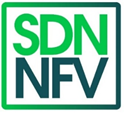 Image Removedcomputing and how it impacts multi-service broadband networks. The Metro Edge Computing project is re-thinking the network architectural edge and routing to extend an NFVI interconnect which may reduce Operator OAM and enable a network of edge computing islands. Work started on new project WT-477 Cloud CO Enhancement which specifies technical aspects to support disaggregated, multi-vendor interoperable white-box solutions within the Cloud-CO architectural framework.
Image Removedcomputing and how it impacts multi-service broadband networks. The Metro Edge Computing project is re-thinking the network architectural edge and routing to extend an NFVI interconnect which may reduce Operator OAM and enable a network of edge computing islands. Work started on new project WT-477 Cloud CO Enhancement which specifies technical aspects to support disaggregated, multi-vendor interoperable white-box solutions within the Cloud-CO architectural framework.
The work group had productive discussions in joint sessions with the ATA and WWC Work Areas for Subscriber Session Steering (WT-474). With broadband networks becoming more dynamic due to SDN control and CloudCO, it is now possible to control which user plane function each individual subscriber should be connected to. This enables an operator to offer different service propositions to different customers. At the same time, user plane functions are becoming increasingly disaggregated and cloud-native, with a centralized control plane that enables additional user plane functions to manage short- or long-term changes in load. As such, WT-474 will define an architecture and interfaces to allow the access network to offer an ingress load-balancing capability towards cloud-native user plane functions.
In relation to the OB-BAA coordination and planning for Broadband World Forum, this group remains working alongside the OB-BAA project stream to plan this year’s demo which will be based on SDN/NFV application notes.
More information about the SDN/NFV Work Area can be found at: SDN and NFV.
WWC delivers initial 5G specifications at Q3
- Target: Address the needs of converged operators, which have both wireline and mobile networks deployed and are in a position to leverage all their assets with combined subscriber offerings.
- Progress: The WWC Work Area’s first set of specifications have passed Final Ballot and are available to the public. These are TR-470 5G FMC Architecture and TR-456 AGF Functional Requirements. There are two more specifications in the process of finalization for CPE and the associated management data model. These documents are the first normative specifications for the equipment that will connect wireline to the 5G core and the CPE it will serve. The Q3 meeting saw a very productive critical review of what the group intends to achieve for the next phase of the work.
- Outcomes: Complete solutions to WWC will be delivered in the Release 16 timeframe.
 Image RemovedWork in the WWC Work Area is transitioning from completing the basic set of specifications to focusing on topics that bring more value to 5G for wireline and provide operators with increased flexibility, revenue potential and deployment options. The goal is to increase the service capabilities of the network to allow operators to fully leverage convergence of their networks while at the same time giving them more paths to transition their networks from legacy to 5G. This work will allow converged operators to provide a uniform experience to their customers irrespective of the access or appliance they are using. This will be supported by a common and streamlined back office and control plane.
Image RemovedWork in the WWC Work Area is transitioning from completing the basic set of specifications to focusing on topics that bring more value to 5G for wireline and provide operators with increased flexibility, revenue potential and deployment options. The goal is to increase the service capabilities of the network to allow operators to fully leverage convergence of their networks while at the same time giving them more paths to transition their networks from legacy to 5G. This work will allow converged operators to provide a uniform experience to their customers irrespective of the access or appliance they are using. This will be supported by a common and streamlined back office and control plane.
Broadband Forum and 3GPP are now finalizing the myriad of technical details required to complete detailed specifications. This is in respect to CPE, network equipment and changes to the 5G core.
Broadband Forum is taking an important role in developing 5G, making recommendations for the connection points between the fixed and 5G mobile core networks in order to drive core convergence.
WWC is also working with BUS to extend the TR-181 data models for 5G to leverage TR-069/TR-369 as part of WWC. The Work Area also did a final push to get the CPE changes to a state of completion and critical review.
For more on the WWC Work Area, please see: Wireless-Wireline Convergence.
Welcome to our new and returning members!
Our Q3 meeting attracted a host of new members and saw a wealth of meeting guests attend. New members included AVSYSTEM, Bell, STL and Zoom Telephonics.
In addition, more than 28 guests attended the virtual meeting from 12 potentially new or upgrading members, including Aprecomm, AirTies, AWS, COMTREND, Communications Research Limited, Edge-corE Networks, FiberHome, H3C, Lenovo, net+, NETGEAR and Radix.
Are you interested in becoming the next member of the industry’s leading standards body in defining broadband networks? Broadband Forum membership will not only accelerate your company’s progress but enable you to become a key influencer in developing 5G, the Cloud, the Connected Home and Access Networks.
We have a range of Membership options for companies of all sizes, from startup companies to large corporations and not-for-profit organizations. Our new Regional Operator Membership category has further opened participation, take a look for further details of the access level privileges, benefits and requirements.
To learn more about the benefits of Membership, watch a video interview with Rhonda Heier, Membership Development Manager, here or email rheier@broadband-forum.org.
Broadband Forum in the news
As 5G evolves from concept to reality and promises to be a lucrative venture for operators, the need for network convergence has never been higher. A feature from Robin Mersh, CEO of Broadband Forum, highlighted the need for changes to networks to keep up with this demand in Embedded Computing Design. An interview with Mersh discussing the Forum’s migration to an open organization, the benefit of open source, the importance of Quality of Service (QoS) and Fixed-Mobile Convergence was also hosted in TeleSemana.com.
In addition, a Connected Home podcast with Telecom Reseller was recorded and published on its website. In the podcast, Mersh and Jason Walls, Co-Director of Broadband User Services Work Area, discussed the User Services Platform (USP) Agent Certification Program and how it has been designed to provide assurance and confidence for service providers and consumer electronics companies looking to generate new revenues from Internet of Things (IoT) services.
A feature article was published in The Fast Mode about how unifying open standards and open source can deliver the agile technologies that enable network transformations and the services of the future. Following the conclusion of the Connected Home webinar series, an article from Daniel Agger, Project Stream lead for Broadband User Services (BUS) Data Modeling Project Stream was hosted in VanillaPlus. The article expressed the view that service providers must first unlock a truly interoperable ecosystem for user services that vastly improves the consumer experience.
Events Calendar
Broadband Forum Meetings and BASe Events
- Q3: September 10, ‘The State of PON Applications in the MSO market’ BASe Series Webinar, Virtual
- Q3: October 13, BASe Events at BBWF, Virtual
- Q3: October 26, BASe North America, Virtual
- Q4: November 17-19, UFBB BASe, Virtual
- Q4: December 1, BASe FTTH Europe 2020, Berlin, Germany
- Q4: December 8-11, Q4 Meeting, Melbourne, Australia
- Q4: BASe Events, Melbourne, Australia, (date TBC)
Sponsorship opportunities are available for Broadband Forum’s 2020 quarterly meetings.
Sponsoring a meeting is a great way to highlight your company and exhibit your company’s innovation in the broadband industry – including demonstrations or prototypes – while showing your support of Broadband Forum. Opportunities vary and can be customized to accommodate a variety of budgets.
Please view the list of our standard sponsorship packages and benefits at: https://wiki.broadband-forum.org/display/BBF/Sponsorship+Opportunities.
If you are interested in sponsoring a meeting, please contact Rhonda Heier at rheier@broadband-forum.org.
Other dates for your diary:
- Broadband World Forum: October 13-15, 2020, Amsterdam, The Netherlands
- FTTH Conference 2020: December 1-3, 2020, Berlin, Germany
- Convergence India: March 24-26, 2021, New Delhi, India
……………………………………………………………………………………………………………CEO
 Image Added
Image Added
Our Spring Member Meeting saw our biggest attendance in more than 15 years, drawing 158 attendees to Mainz, Germany. We have enjoyed a very productive meeting, and continue to build on the success of 2023, with 16 new work area projects started and two new Open Broadband projects launched since our last meeting.
In Mainz, the home to the invention of Gutenberg’s printing press and no stranger to ground-breaking tech innovation, we opened the meeting with discussions on the latest significant breakthrough in tech history. Bringing together technology innovators from across the industry, our Town Hall Innovation Series explored the growing role of Artificial Intelligence (AI) and Machine Learning (ML) in broadband networks. The BASe Technical and USP Summits took place in tandem with our member meeting and was highly attended with a host of engaging plenary sessions, roundtables, and video demonstrations. The three events amassed a total of 243 registered attendees across five days.
Thank you to all of our work area directors, project stream leaders, editors, and contributors for their continuous dedication in building universally adopted open standards and open-source software. Talking with many of the attendees, there was real energy and enthusiasm surrounding the ongoing work and direction of the Broadband Forum.
We also recognized those individuals whose service and leadership are significantly helping drive our vision of intelligent, services-led networks that prioritize user experience. Congratulations to our Distinguished Fellow, Circle of Excellence, and Outstanding Contributor award winners.
We look forward to seeing you again in Incheon, South Korea, on June 17-20.
-Craig Thomas, CEO, Broadband Forum
| Panel |
|---|
| borderColor | #135056 |
|---|
| titleColor | #135056 |
|---|
| borderWidth | 1 |
|---|
| titleBGColor | #E6EBEF |
|---|
| title | Previous Newsletters |
|---|
|
|











